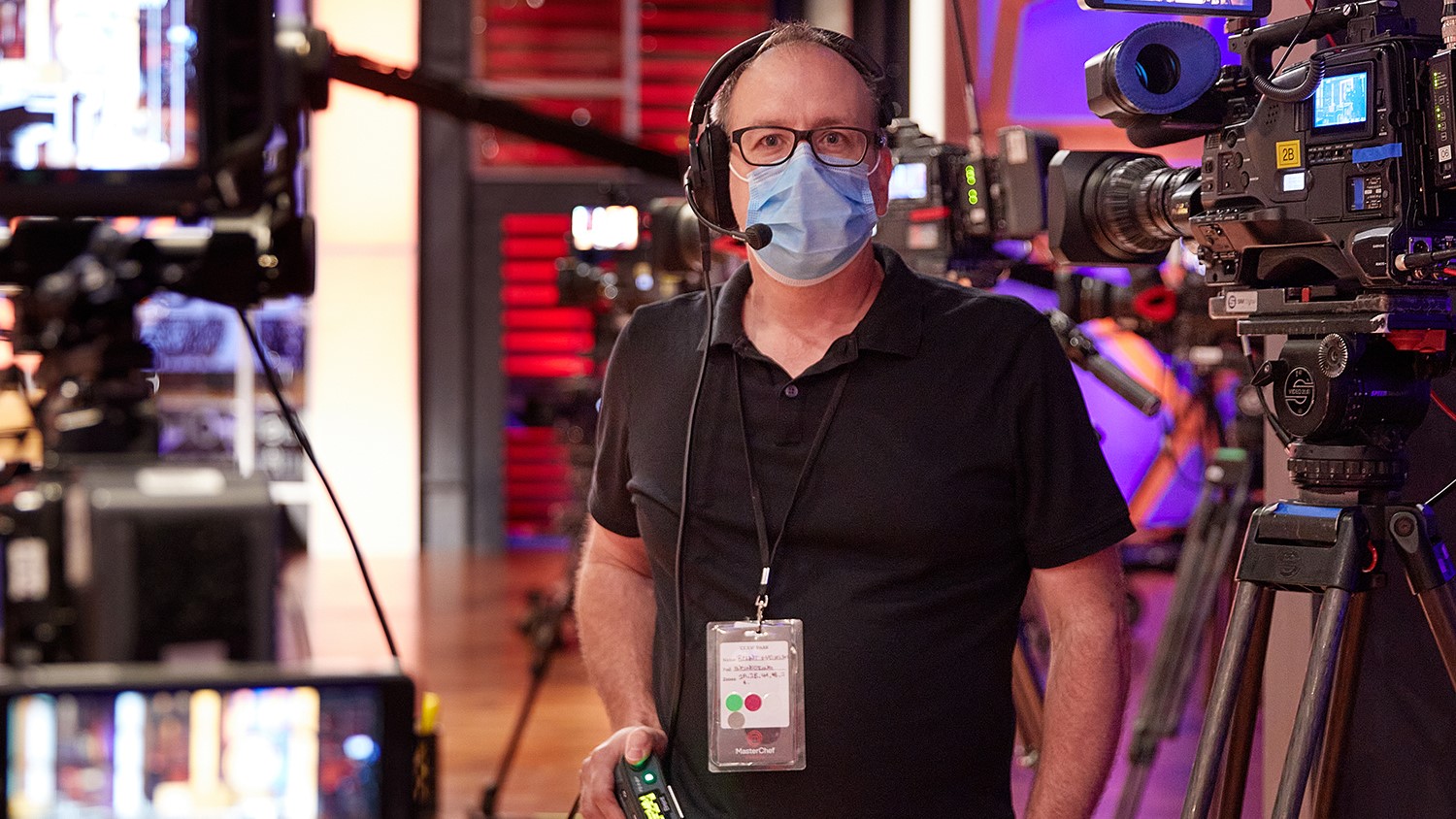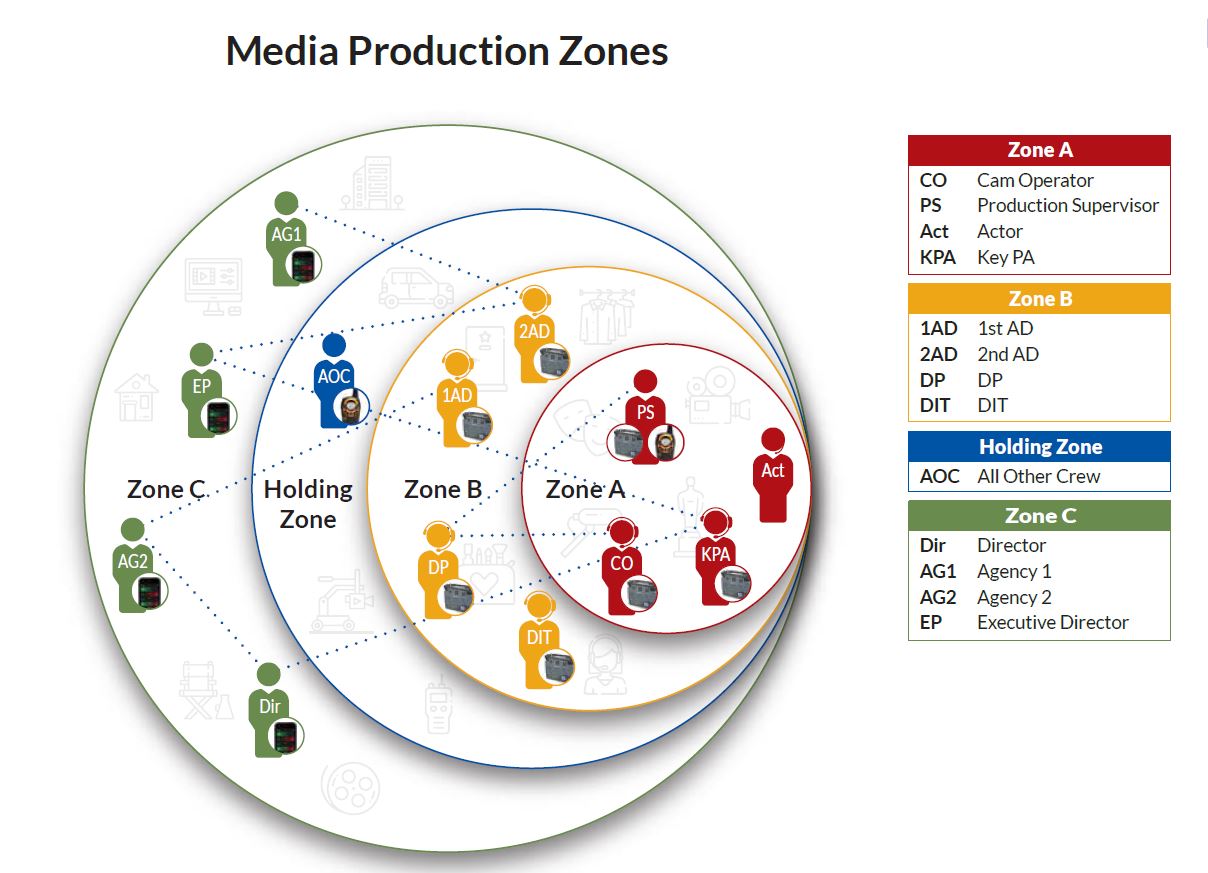The New Role of Comms in Production Environments
Wireless intercom systems enable safety and health compliance and enhance collaboration and creativity

Feature film and episodic TV productions are used to being on hiatus, but no one could have anticipated the level of work stoppage caused when the COVID-19 pandemic hit. Productions are now resuming globally; however creative and technical professionals are returning to on-location sets that look and feel much different than they did before March 2020.
They’re also finding new uses for a familiar and proven tool. Full-duplex wireless intercom systems are helping to rewrite the script for safety, creativity and collaboration in today’s new production environment.
ON-SITE HEALTH COMPLIANCE
Crews still deal with traditional production headaches like deadline and budget pressures. Now, the need to mitigate COVID-related health and safety risks adds an entirely new set of challenges. Fewer personnel are allowed on sets.
Locations are implementing rigorous safety protocols including regular testing and daily temperature checks. On-site health compliance managers are becoming a regular presence. And just like in every other aspect of daily life, face masks are required with social distancing rules in place to limit large group gatherings.
Plus: Staying Safe On-Set
As a result, the side conversations and “huddle” discussions typically common on a set are no longer possible, or at least more difficult to conduct. Wireless intercoms are playing a larger role in providing a more nuanced and controlled way to communicate among teams.
The role of these systems has expanded from being an enabler of clear communications to an on-set problem-solver. Experienced pros now see them as critical for properly executing a creative vision and allowing collaboration to occur freely, while complementing or even integrating with more familiar comms technologies.
“Everybody on a film or TV set is used to walkie-talkies,” said Peter Schneider, vice president of Gotham Sound & Communications. “For all their benefits, they are still a blunt instrument. Only one person can talk at a time on a channel and the audio quality and feature sets are limited. Those limitations really rear their head when you add PPE and distancing, taking away the ability to walk up to a crew person and whisper in their ear about something you'd like to change before the next take. That’s been the driver for broader deployments of full duplex-style wireless partyline [PL] systems.”
The new working environment, while maybe unfamiliar at first, is getting an overall positive response. “It might take a little longer the first day as everybody gets used to a new system but it’s a great way of doing things,” said Technical Producer Brent Marchenski. “Be aware of how you relate and react with other people. It's common sense. Be safe.”
OPERATING GUIDELINES
The industry at large has taken action, with one example being the concept of “Zoned Production” outlined in “The Safe Way Forward.” This set of operating guidelines developed by the Directors Guild of America, International Alliance of Theatrical Stage Employees, International Brotherhood of Teamsters and the Screen Actors Guild-American Federation of Television and Radio Artists is designed to safeguard everyone on-set by enforcing greater physical separation and reducing the density of crew members.
Efforts like this have led to the creation of intercom “pods,” where different departments of a production can have a common channel for all, as well as their own private channel. This allows them to maintain proper distance while still carrying on efficient communications on a more granular level—another area where wireless comms deliver.

In addition to enabling full duplex and high-quality natural conversations, wireless PL systems allow for the flexible channel assignments needed to support these pods.
“Much of this push for wireless communications comes from the camera department,” Schneider added. “DPs may want to talk to lighting or talent one-on-one, or to their crew during or right after a shot. When everyone needs to do all this but can't be physically close, that's when a wireless PL system gets really interesting for facilitating all these different styles of communication.”
Using wireless PL not only leads to more targeted conversations, but they can also create production environments that are calmer, low-stress and more “chill,” words not typically used to describe a film or TV set.
“It’s made what is normally a ‘yell-y’ atmosphere very calm,” said John Kendrick, a veteran communications technician. “The same conversations are taking place, they’re just quieter and cooler. Everybody can talk in a normal voice as if they're standing next to somebody and I’ve seen crews experience less fatigue at the end of the day.”
That day can also end earlier as wireless PL contributes to a more efficient work process. Often, fewer cuts for technical reasons are needed since more people are talking through headsets on a private line to address an issue.
“I’ve seen this technology contribute to production wrapping an hour earlier each day,” said Kendrick. “ADs don’t have to change radio channels to call hair and makeup. Instead they just have a hair and makeup button. People aren’t getting stepped on or dealing with someone sitting on their radio and listening to them eat. All that goes away.”
While on-set personnel wrestle with their new routines, other people accustomed to being on site are adapting to their own new roles: remote worker. Varying COVID rules in different regions have made travel to and from a site more difficult, especially with quarantine periods required upon arrival.
This means many clients, producers, agents and even directors now are working remotely, but still need to interact and communicate with a production as if they’re on set.
“It's possible to make the electrical connections from Zoom to a walkie, but it's not exactly conducive to natural communication,” Schneider said. “But you can easily integrate Zoom into a comms system allowing people to talk naturally and seamlessly, as long as you manage the mix minus aspect. They can see things in real time, react verbally and join conversations—whether they're in the next room or 2,000 miles away.”
James Schaller is regional sales manager, Northeast USA for Clear-Com.
Get the TV Tech Newsletter
The professional video industry's #1 source for news, trends and product and tech information. Sign up below.
